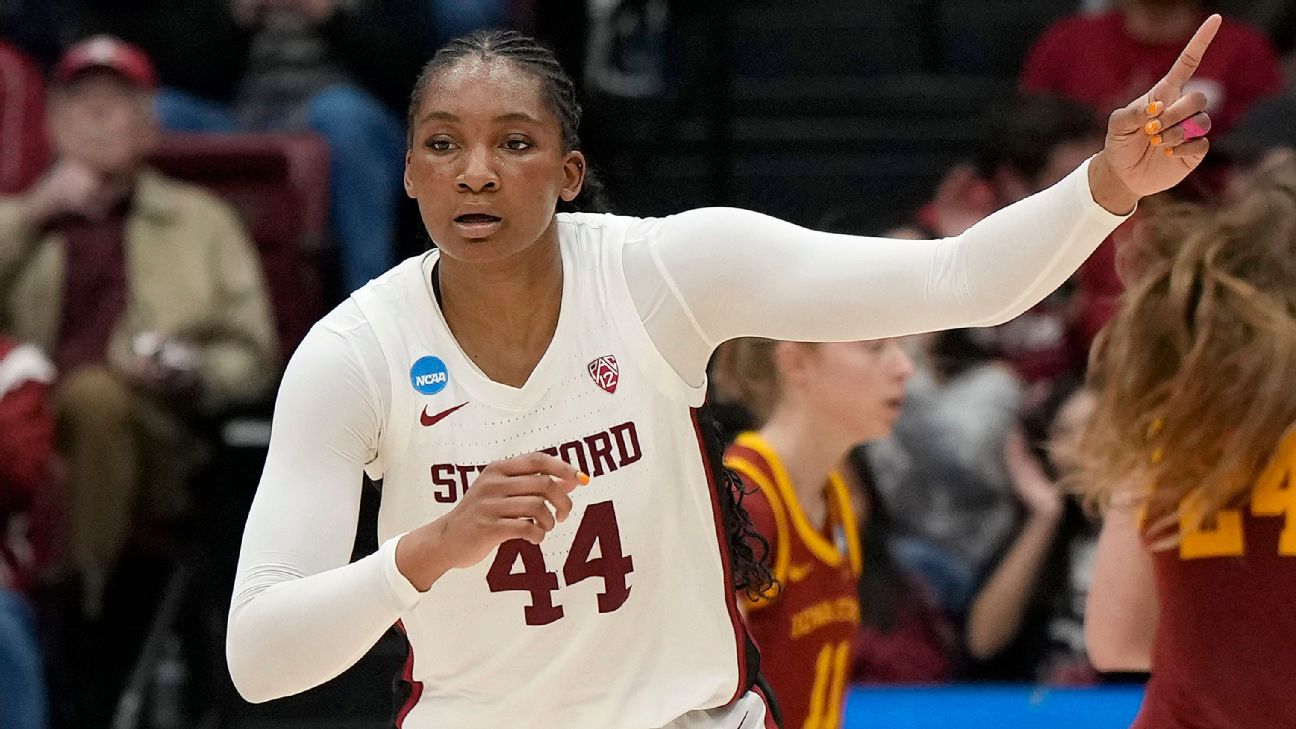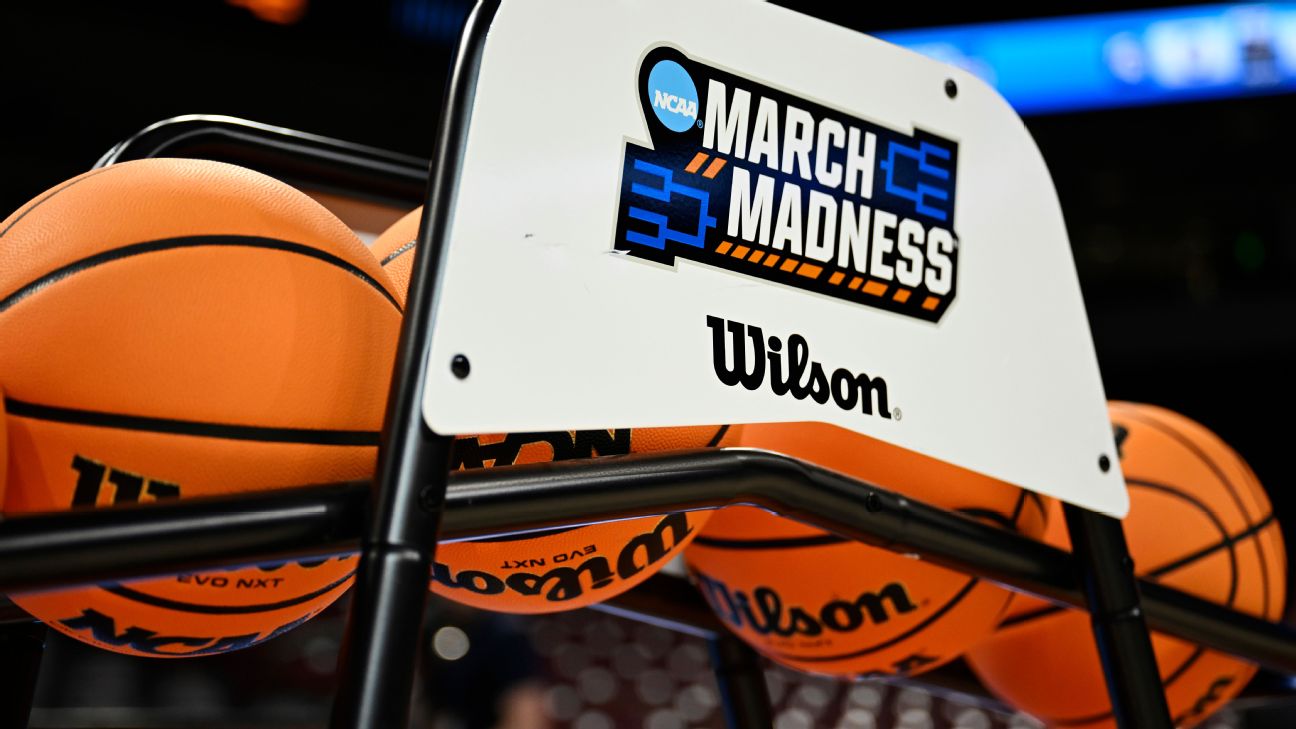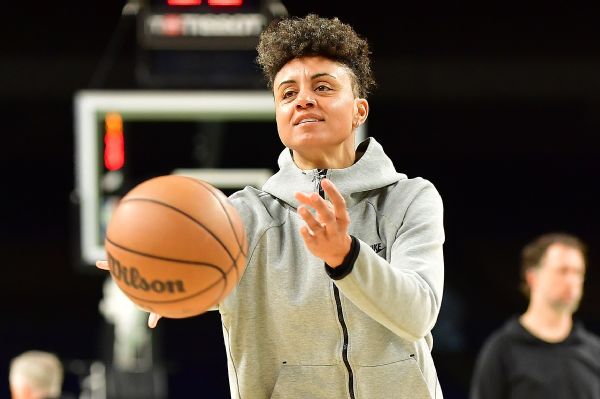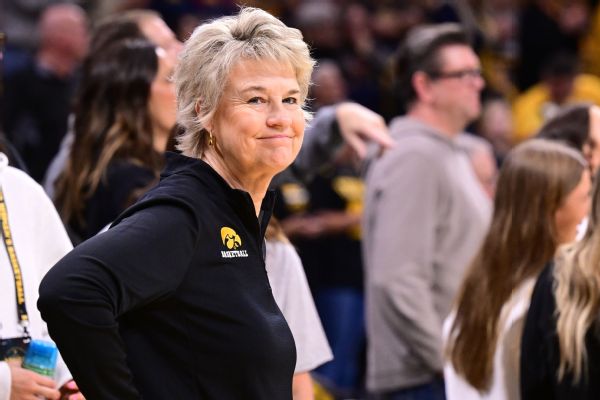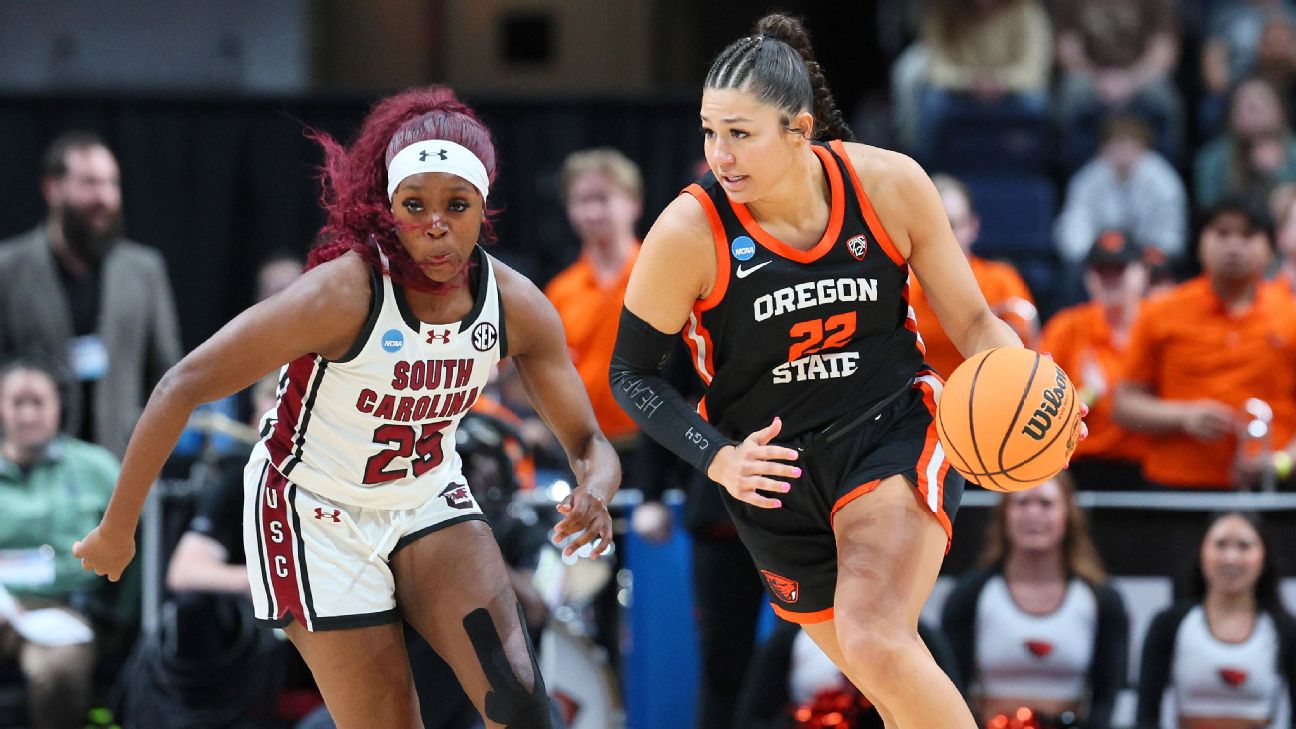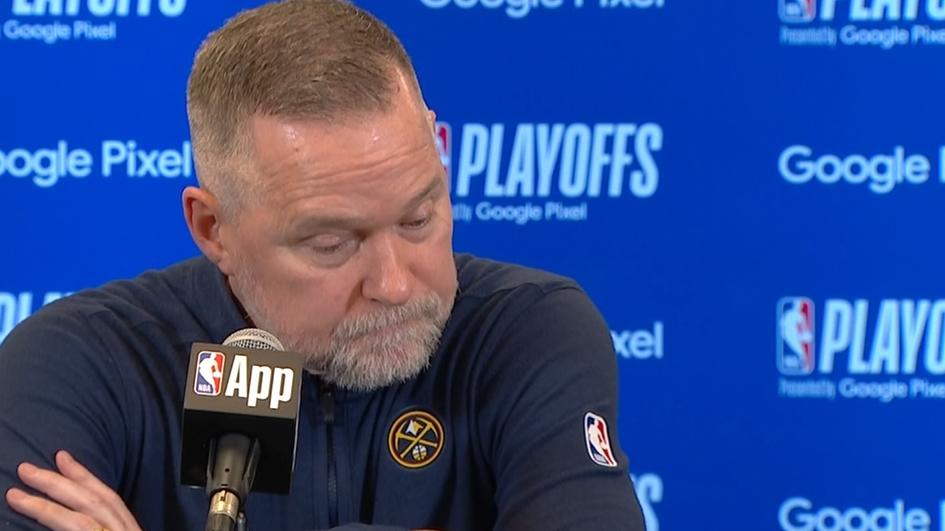![Ant Ed [608x342]](https://a.espncdn.com/photo/2024/0509/r1330387_608x342_16-9.jpg)
How active WNBA players fared the first time they wore their signature or player edition sneakers
Nearly three weeks into the NBA playoffs, things are taking shape -- but not as we expected.
The defending champion Denver Nuggets find themselves on the ropes after losing the first two games of their series with the Minnesota Timberwolves in Denver, while the Timberwolves -- who hadn't won a playoff series since 2004 -- have been the most impressive team in the playoffs, sweeping the New Orleans Pelicans in Round 1.
Out East, the Boston Celtics have yet to be tested in a blowout-laden 4-1 series with the Miami Heat and a dominant Game 1 win against the Cleveland Cavaliers, leaving all eyes on an Eastern Conference throwback series between the Indiana Pacers and New York Knicks for a spot in the conference finals.
After two games apiece, we looked at the early statistical outliers to see what was real (scoring being down) and what was not (Pascal Siakam as the playoffs' leading scorer). Now that we've seen at least five games from each team, it's time to revisit the biggest trends of the playoffs thus far and what we can learn from them.
Here are four of the biggest trends, starting with Minnesota's Anthony Edwards making the leap at age 22.
Edwards has been far and away the Playoff MVPWhen ESPN's Neil Paine ranked the best players of the first round using advanced stats, Edwards finished second behind three-time MVP Nikola Jokic, but that was before Edwards' Timberwolves took the first two games of their series against Jokic's Nuggets in impressive fashion.
Add in the tendency for many all-in-one stats to favor big men over perimeter players and no one has been close to Edwards' value thus far. His 1.7 wins above replacement players by my WARP metric are 26% above the next highest total -- Kyrie Irving of the Dallas Mavericks, who benefited from playing an extra game.
Although Edwards had a strong regular season and will likely earn All-NBA honors for the first time in his career, this is still a huge jump in play after he finished sixth in regular-season WARP. Looking at playoff series since 1997, seven players have averaged at least 0.25 WARP per game over the first two rounds of the playoffs without having been voted All-NBA first team to that point.
In many of those cases, like Paul Pierce in both 2002 and 2003 (Boston), Ben Wallace in 2003 (Detroit Pistons), Elton Brand in 2006 (LA Clippers), Chauncey Billups in 2009 (Denver) and Rajon Rondo in 2012 (Boston), the playoff run represented a high-water mark for their value. But two rising star shooting guards -- like Edwards -- made the leap to top-five players in real time. Both, coincidentally, while playing with Hall of Famer Shaquille O'Neal.
Entering the 2001 playoffs, 22-year-old Kobe Bryant was the Robin to O'Neal's Batman. But by the end of the Lakers' 15-1 romp through the playoffs, he'd emerged as a legitimate co-star, averaging 29.1 points, 7.3 rebounds and 6.4 assists. Dwyane Wade's 2005 playoff run at age 23, which ended in the conference finals despite his 27.4 points, 6.6 assists and 5.7 rebounds per game, was a taste of what was to come when he won Finals MVP the following year as the Heat won the title.
Averaging 32.3 points, 6.8 rebounds and 5.8 assists in the playoffs, Edwards is on a similar pace. His emergence as potentially the best player in a series featuring the reigning Finals MVP changes the ceiling for what the Timberwolves can do, starting this postseason.
The Nuggets are getting destroyed in first halvesAs important as Denver's clutch play was to the team's 2023 title run, the Nuggets also put together the strongest first halves of any playoff team a year ago, outscoring opponents by 9.0 points per 100 possessions according to NBA Advanced Stats. That has changed dramatically this year, when Denver's minus-17.0 net rating in first halves ranks ahead of only the long-eliminated Heat (minus-33.4).
Only one other team in the play-by-play stats era (back to 1997) has posted a worse first-half net rating over multiple playoff series: the 2013-14 Portland Trail Blazers at minus-17.1. There's an obvious reason for that: Most teams that get outscored so badly before halftime are quickly wiped out of the playoffs. Portland was a more acceptable minus-6.7 points per 100 possessions in the first half of its first-round win over the Houston Rockets before getting routed against the San Antonio Spurs in Round 2 (minus-29.5).
Against the Los Angeles Lakers in Round 1, the Nuggets could afford to fall behind an average of 14.7 points per 100 possessions in the first half and still win the series in five games by virtue of their second-half comebacks. But Denver doesn't have that margin for error against Minnesota and must start better, particularly on offense. The Nuggets' 96.5 points per possession before halftime ranks 15th among playoff teams before its offensive rating jumps to 122.3 in the second half, the fifth-best mark in the playoffs.
Inevitably, shot-making is a factor here. The Nuggets are making 28% of their 3s in first halves and 37% after halftime. Denver's shot selection has been better over the final two quarters as well. According to Second Spectrum's quantified shot probability (qSP) metric, which factors the ability of the shooter in addition to the location, type of shot and distance to nearby defenders, the Nuggets' first-half shot quality ranks sixth in the NBA. Their second-half shots have been the best of any playoff team, but Denver needs that level of execution for a full 48 minutes.
Boston and OKC blowing out the competitionJust six teams since the first round of the playoffs expanded to best-of-seven series in 2003 had seen at least three of their first five wins come by 20-plus points. We've added a pair of teams to that short list in Boston and Oklahoma City Thunder this playoff.
The Celtics actually stand out even more with 20-plus point victories in four of their five wins. The only other team to have so many blowout wins through Game 1 of the second round was the 2016 San Antonio Spurs, who would be upset by an Oklahoma City team led by Kevin Durant and Russell Westbrook despite winning Game 1 of the series by 32 points.
In general, early blowout wins haven't translated into titles. Boston's 2008 title team, which alternated three wins by 20-plus points and another by 19 with three road losses against the No. 8 seed Atlanta Hawks in Round 1, was the only champion from this group, with just one other team reaching the NBA Finals: the 2016 Golden State Warriors.
That track record is hardly reason for skepticism about the Celtics and Thunder, but it is a reminder the Mavericks can still come back and beat Oklahoma City despite a lopsided Game 1 loss. The Cavaliers' prospects for beating Boston as heavy underdogs entering the series are less favorable.
Who's afraid of 3s? (Well, you should be)One of the most fascinating stats from this year's playoffs has been the success of teams that merely take more 3s. I first saw this from Lev Akabas of Sportico, who pointed out that through April playoff teams with more 3-point attempts in a game were 27-8. That has now extended to 34-13 (.723), which would blow away the best record for teams that take more 3s in any postseason. Previously, that came in 2015, when teams with more 3-point attempts went 50-31 (.617). So far in the 2024 playoffs, teams are already above .500 when attempting more 3s (22) than in 2015 (19).
What's intriguing about this trend is that simply attempting more 3s hasn't been as strong a winning formula in recent regular seasons as 3-point volume has surged. Not coincidentally, regular-season win percentage for teams taking more 3-point attempts peaked at 55% in 2015 but has been in decline ever since. The 2022-23 regular season was the only one since 2019 in which teams with more 3-point attempts had an above-.500 record, and those teams won just 48% of games during this regular season.
Given how much it runs counter to recent trends, I'm not quite sure what to make of this one. Perhaps it's merely a fluke, since we're still talking about fewer than 50 games total. We certainly see more fluctuation in the winning percentages during the playoffs than during the regular season. This is one stat worth monitoring for the rest of the postseason.


